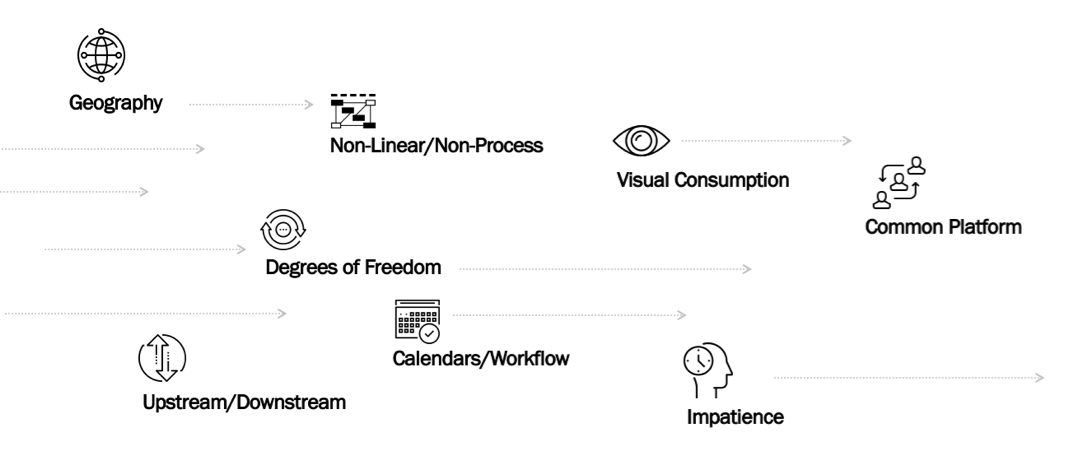Addressing Unique Change Management Challenges with PLM in Retail
Today’s business environment requires organizations to swiftly adapt to continuous changes in order to stay competitive. Factors such as globalization, mergers and acquisitions, and new technology developments force companies to respond quickly to change or be left behind. Organizational change is vital for any business that wants to survive and thrive in our increasingly competitive and fast-paced world. The success or failure of these changes, whether breakthrough, incremental, process related, or technology related, is largely determined by the adoption rate of the people who execute on them on a daily basis.
Typical Challenges
There are some shared challenges in managing change across all industries. Retail, however, presents a series of added challenges due to factors like: multiple geographic locations, different preferred platforms by brands within the same retailer, and product seasonality, making it a challenge to coordinate schedules. These scheduling conflicts make it difficult to migrate into new systems while trying to minimize work impact. With that in mind, we highlighted the top eight challenges we have seen with our retail clients:

- Geography – Retail, footwear and apparel (RFA) companies have multiple international locations that will be affected by the change; usually a headquarters location, New York and one or more locations in Asia
- Non-Linear/Non-Process – A large proportion of the people affected are creative, nonlinear, non-process-oriented thinkers and are not accustomed to the structured, process-oriented approach needed for an implementation
- Visual Consumption – Those affected by the change tend to consume concepts, ideas and information in graphical images (2D, 3D), video and physical samples, not in text
- Common Platform – The movement to a common platform across brands, categories and/or business units, requires a higher degree of cooperation between groups than previously required
- Degrees of Freedom – Those affected by change lose the freedom and flexibility they are used to with Excel or highly customized product lifecycle management (PLM) systems, and tend to resist the design and process definition necessary to help avoid system customizations
- Upstream/Downstream – Often there is an imbalance of “gives” and “gets” between Design (who “gives” more system inputs) and Product Development and Sourcing (who “gets” the downstream benefits)
- Calendars/Workflow – Because of the overlaps of seasonal calendars and the associated workflow, those affected by change often must work in parallel systems for a few seasons before completely landing on the new system
- Impatience – The people affected by change tend to be incredibly impatient and this presents challenges when programs span multiple years, making them lose interest or making the program lose momentum
Addressing the Challenges
A successful change management and change leadership approach is organized into seven main areas. To help you tackle them one at the time, we are listing them below for you in a succinct way that should point you in the right direction to get you started:
- Leadership Alignment - Understand the compelling reason for change, how it will drive results and how PLM program goals directly correlate with the organizational goals
- Change Readiness – Assess the users’ and organization’s readiness for the new system, processes and capabilities
- Role Evolution - Evaluate how roles will evolve from the current state to the future state. Map the current “as is” vs. “to be”. This activity is normally referred to as impact analysis
- Communication and Branding – The use of branded organizational communication helps increase user awareness about upcoming changes and inform users about key project milestones, progress, and “what’s in it for me?”
- Metrics – Metrics can be used to measure three main categories: project health, business results, and user adoption. Particularly, user adoption metrics provide insight into user performance within the system and highlight needed improvements and corrective actions
- Education and Training – User adoption is key to success. Through the development of training materials, FAQ cheat sheets and training sessions, you can focus on both process training and tool training
- Sustaining the Organization – Ultimately, we aim to design organizations to ‘stick’. The right change that understands business needs and can lead to better practices guaranteeing continuity, improvement, and sustained results
Three Step Approach
Successful change management and change leadership programs require three main steps. We believe that understanding where we are currently is just as important as defining where we want to be, and once we’ve obtained the desired state, ensuring we can sustain the change. To provide you with some context, find below a snapshot at these three steps:

- Assessment - Conduct a readiness assessment to evaluate current vs. desired future change management state. Assessments are conducted through both a qualitative and quantitative approach and the outcomes help us define “what success looks like” by identifying needs, opportunity areas, and gaps, ultimately leading us to defining a roadmap needed to get there. It is critical to engage stakeholders and gain executive alignment during the assessment stage
- Implementation – By leveraging the executive alignment gained during the assessment phase, we recommend developing a formal strategy, a plan to execute against, as well as metrics to help us define success. During the implementation phase, we address changes in key capability areas from the transformation roadmap such as processes, team roles, capabilities, training, decision making, and governance
- Sustainment – The third phase is sustainment, and that happens by designing organizations to ‘stick’. The three initial components are:
- Understanding of the business needs to lead to better practices, guaranteeing continuity and improvement
- Evaluating and tracking results to identify opportunity areas for improvement
- Driving rewards and recognition by identifying change agents to champion and sustain the change management effort and help execute change across all business units
Conclusion
Progressive PLM-based change leadership methodology is an approach built on the premise that people must be led to change and to adopt new ways of thinking, working, and collaborating globally in order to drive better business results. These leading practices have shown that effective organizational change management is highly correlated to achieving PLM project objectives, schedules, and budgets.
Managing change effectively requires moving the organization from its current state to a future, desired state at minimal cost to the organization. Based on the successful transformations of our clients, we’ve identified eight pillars to successful organizational change management in order to increase adoption and deliver change in a way that achieves the defined business goals and strategies. Great leaders know that it is not enough to simply tell people how to change; organizational change requires putting in place mechanisms that will help them actually implement the new behaviors.

